Marble Architecture
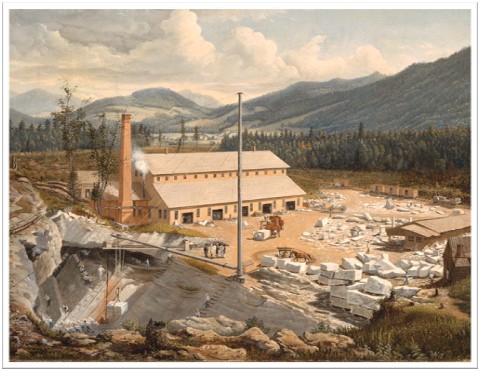
On June 17, 1872, the delegation boarded a train in Saratoga, New York headed towards Boston, Massachusetts. As the landscape passed through the train windows, the delegation could see marble and stone quarries in the near distance. At the time, hydraulic powered mining was a booming industry in Massachusetts, and marble and slate were popular building materials for structures across the country. The delegation was impressed by the look and utility of slate stone, a structural material that was both decorative and protective from wind and water. The Meiji Restoration (1868) marked a turning point in building style in Japan, with many new structures of the 1870’s mimicking Western ideals. […]
Cotton and Wool Mills
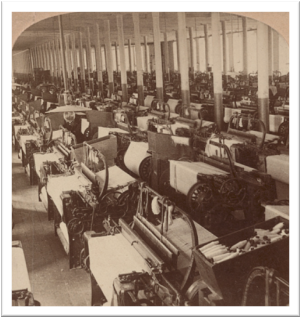
On August 3, 1872 the embassy delegation headed just north of Boston to visit the cotton-milling town of Lawrence, Massachusetts. With three large mills, all powered by the Merrimack River, Lawrence was a small but bustling center for cotton textile production. The mills relied on the popular Jacquard machine, invented by French textile artisan Joseph Marie Jacquard in 1804. The group toured the four-story production buildings, in awe of the lengthy and intricate process required to transform raw cotton into printed cloth. Shortly thereafter, the delegation made a stop in nearby Lowell, Massachusetts to survey wool mills that were also powered by the Merrimack River. The focus in Lowell turned […]
Prisons
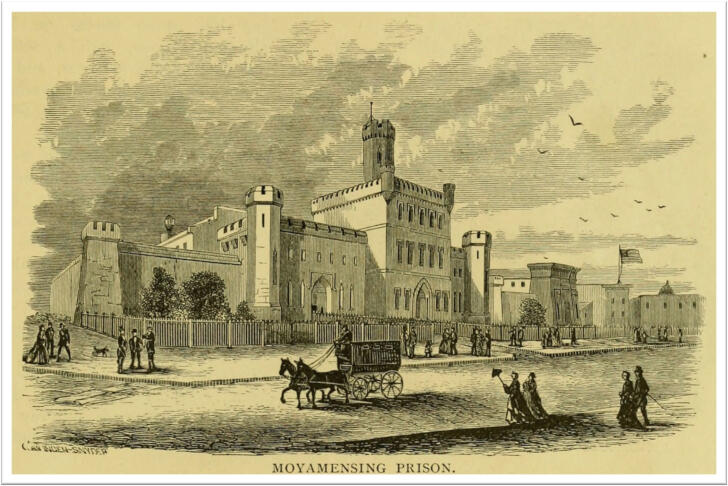
On July 30, 1872, the delegation visited a Philadelphia prison. At the entrance gate houses overlooked large iron doors, and imposing stone walls created the perimeter. The main holding cells were located in a two-story stone building at the center of the prison yard. The delegates saw that the facility was not overly crowded, and inmates were all housed in individual cells measuring roughly six by nine feet. The prisoners spent their days working on many tasks, including creating shoes and weaving straw mats. Upon reflection, once back in Japan, Kunitake Kume noted that the prison systems in Britain, France, and the United States were very similar.
United States Mint
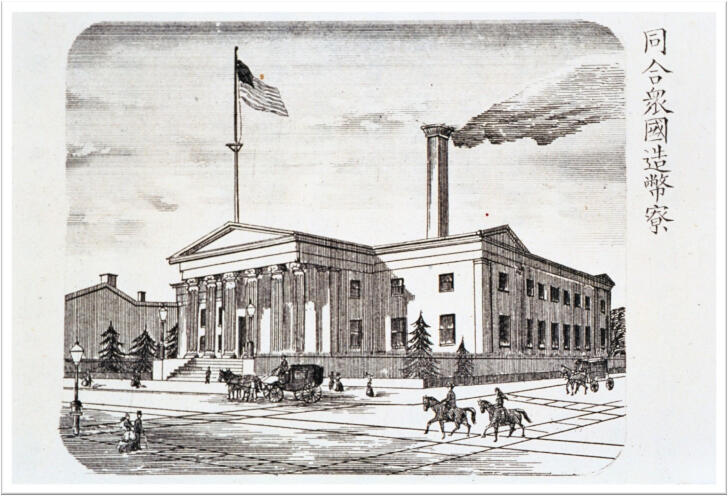
On July 29, 1872, the delegation visited the United States Mint, a building filled with coin-making. At the time, dimes and quarters were roughly 90% real silver, while pennies were 95% copper. The delegates watched as blocks of silver and copper were melted at extreme heat into thin sheets, then cut with circular punches into the correct denomination. Crafting coins was an intricate process, with skilled human labor and machines working under thin margins for error. The group marveled at the careful system of large flat trays, scales with indented holes, and funnels, that allowed freshly minted coins to be sorted into cloth bags. Back in Japan, changes in the […]
Iron and Steel Manufacturing
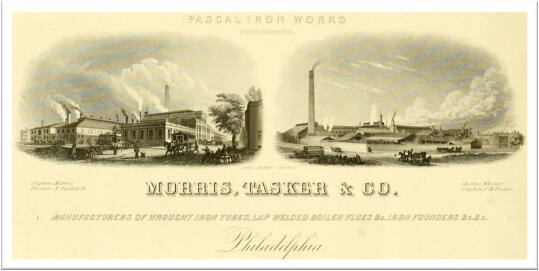
During the delegation’s tour of Philadelphia, they learned about the city’s famous history of iron and steel manufacturing. Local plants were incredibly successful, due in large part to Pennsylvania’s natural abundance of high-quality coal and iron mines. The industries had transformed the economic and natural landscape of the area, and had also stimulated other forms of production in the city. Kunitake Kume noted that the spinning industry had stimulated the production of cotton, wool, and linen across the state.
Printing Office
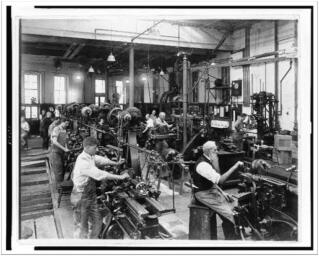
The delegates’ visit to the U.S Printing Office in Washington D.C struck a chord – the whole group was attracted by the calm and calculated atmosphere of the working environment. They witnessed synchronicity in action during a tour of the composing room on the top floor. From above, the delegates watched as mechanical typesetting, stereotyping, and printing services worked in tandem using steam power. While men and women worked side-by-side in the office, the group observed that roles requiring greater precision, such as typesetting, were dominated by women. Kunitake Kume made a note that because of the newfound technological progress in machinery, which had turned printing into a relatively inexpensive […]
Postal Service Headquarters
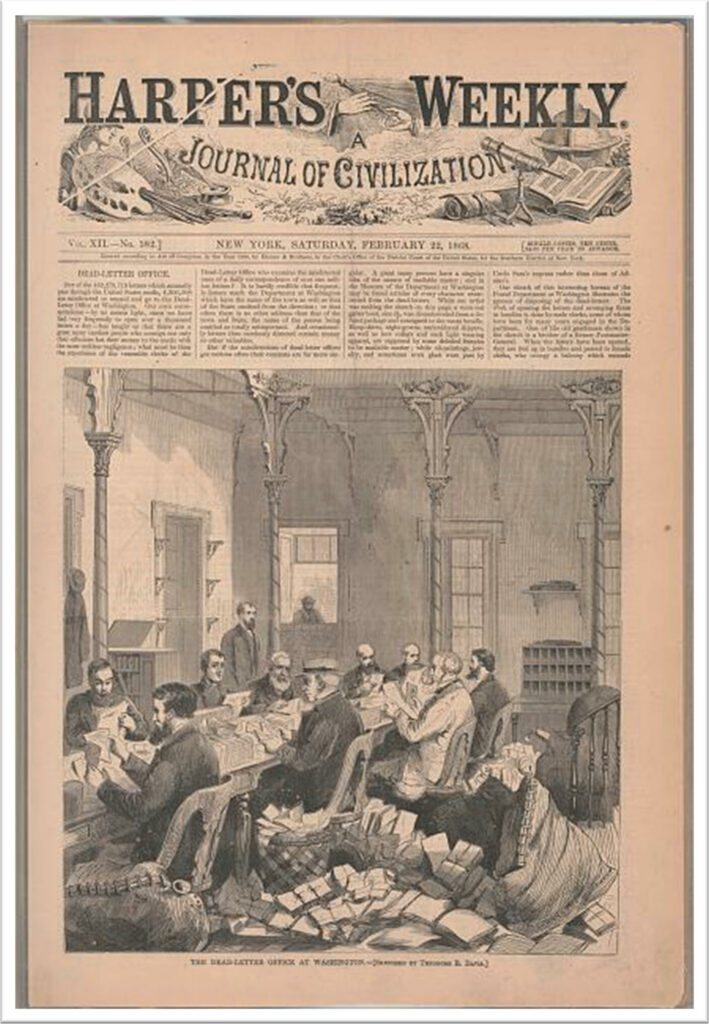
On April 30 1872, the Iwakura Mission group visited the Washington D.C headquarters of the United States Postal Service (USPS). They toured the dead letter office, piled high with undeliverable mail, and went through the sorting and delivery departments. The guide informed the delegates that while the USPS excelled at delivering letters and parcels, other independent services were better suited to ship precious metals or other fragile commodities. The group was surprised to learn that the USPS could deliver mail to Yokohama or Nagaski via international delivery! Kunitake Kume noted the ability to transport information through a national postal system was a crucial aspect of economic growth. Kume surmised that […]
National Observatory in Georgetown
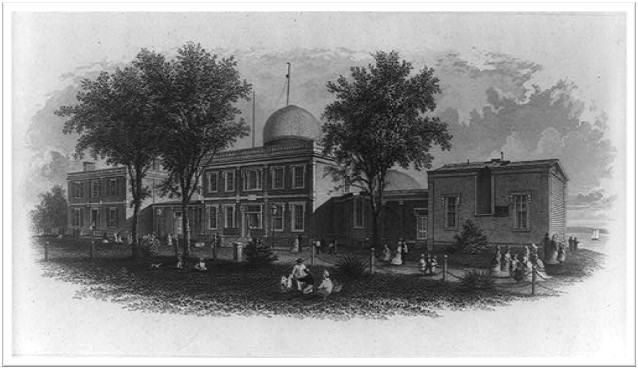
On April 23, 1872, the delegation was granted access to the United States Naval Observatory and its 10-foot-long equatorial telescope. Three stories high and overlooking the Potomac River, the telescope allowed the group to observe the movements of celestial objects such as the moon and stars in detail in addition to Mercury and the moons of Jupiter. Only five years later, in 1877, the same observatory would gain international attention for discovering the two moons of Mars. The building still exists today and serves as a National Historic Landmark. Astronomical observations were limited in Japan until the Meiji era (1868 – 1912), when the government tasked astronomers to calculate the […]
Streetcars
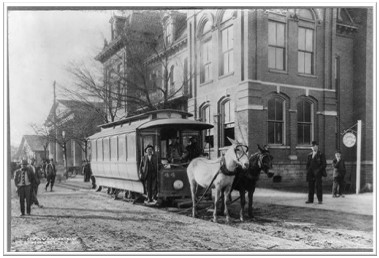
During the delegates’ time in Washington D.C, they encountered streetcars passing through the bustle of the boulevards. Pulled by horses, the cars were used to transport freight, baggage, and as many as fifty people. The group marveled at the vehicle’s ability to carry so many passengers and cargo with ease. Kunitake Kume suspected that the streetcars were so efficient because of their superior wheel craftsmanship, coupled with the city’s well-surfaced roads.
Ferries and Piers
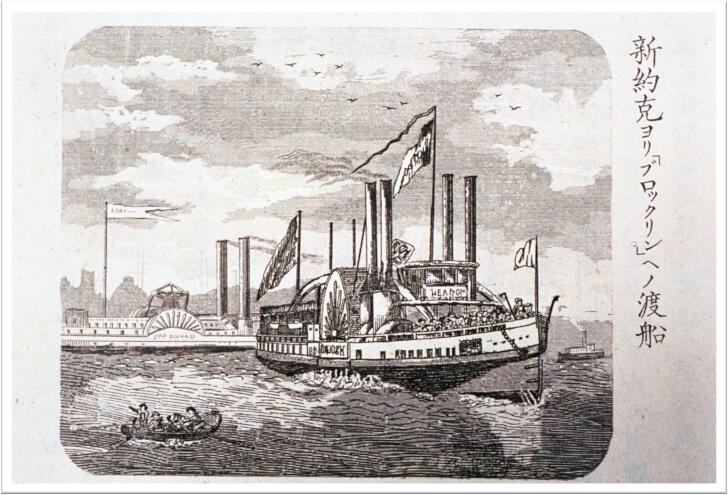
In 1872 New York City was a major port, surrounded by water. As the delegates arrived into the famed metropolis, they marveled at the size and breadth of the city’s commercial ferry and freight vessels. There were so many people, horses, and goods in transit along the Hudson River! Nothing the men read about America could have prepared them for the scale of the United States’ shipping enterprise. The magnitude of the operation took them aback. The delegates were impressed when their carriage was loaded onto a massive ferry, without any need for them to disembark. Kunitake Kume wrote that it was surreal to view waves from a carriage window.
